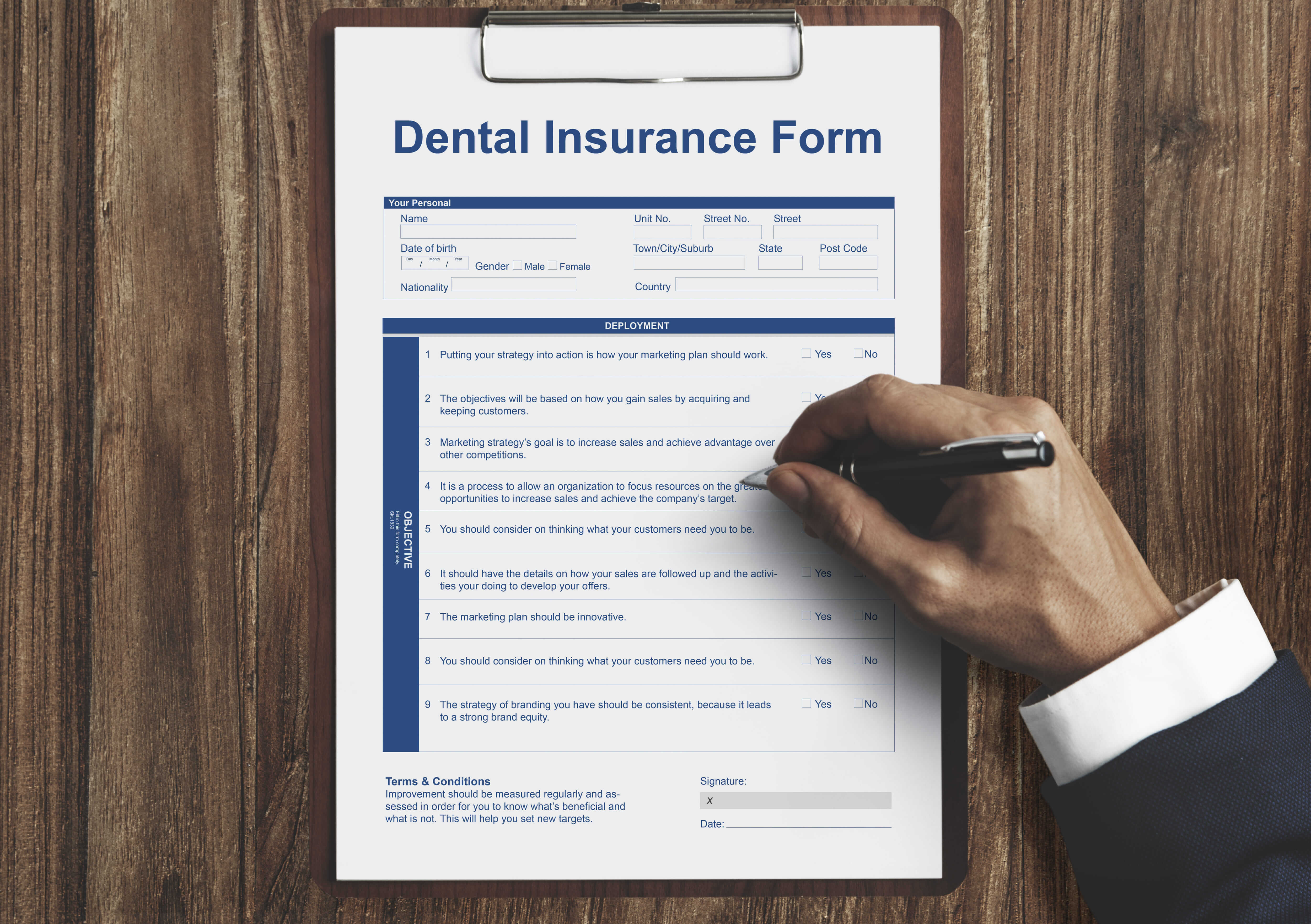The 47-Day Blindspot: Why Your Insurance Collections Are Sabotaging Growth

Your dental practice completes a $4,500 implant procedure. The patient is thrilled. Your clinical team delivered excellent care. But here's what your P&L won't show you: it'll be 47 days or longer before you see that money. And that's only if everything goes perfectly.
Welcome to the 47-Day Blindspot, the invisible cash flow gap that's quietly killing your ability to grow.
What Is the 47-Day Blindspot?
The 47-Day Blindspot is the gap between when you deliver dental care and when you actually collect payment. It's called a "blind spot" because it's invisible on your profit statements, revenue gets recognized immediately, making your practice look profitable on paper. But the cash? It's trapped in a complex web of insurance processing, patient portions, and collection attempts.
Here's the typical timeline for a procedure with insurance coverage:
- Day 0: Procedure completed, patient walks out happy
- Day 3-7: Insurance claim submitted (if billing is efficient)
- Day 30-45: Primary insurance payment received (for clean claims only)
- Day 45-90: Patient responsibility portion—the amount insurance doesn't cover
- Day 90+: Follow-up collection attempts, payment plans, or write-offs
However, what makes this truly problematic is that the patient portion is growing. With high-deductible plans becoming increasingly common, patients are responsible for larger out-of-pocket expenses. That $4,500 implant? Insurance might cover $2,000. You're waiting 45 days for that insurance payment, then trying to collect $2,500 from the patient over the next 60-90 days, if you collect it at all.
The Real Cost: Revenue You Never Collect
The 47-Day Blindspot isn't just about waiting for money. It's about money you never receive at all.
Treatment Declined at the Chair
Picture this scenario that plays out in dental practices every single day:
A patient needs a crown. The treatment plan is $1,800. Insurance covers $900. The patient needs to pay $900 out-of-pocket. They don't have it available today. They say "let me think about it" and never reschedule. You just lost $1,800 in revenue because of a payment timing issue.
Now multiply that across:
- Implants ($3,000-$6,000 per tooth)
- Full-mouth reconstructions ($15,000-$40,000)
- Orthodontics ($4,000-$8,000)
- Cosmetic procedures (veneers, smile makeovers)
DSOs and group practices face this problem at scale. When you're operating 6-10 locations, treatment declinations due to payment concerns represent millions in lost annual revenue. The clinical expertise is there. The patient's need is real. But the financial barrier stops the transaction.
The Collections Nightmare
Even when patients agree to treatment, collecting the patient portion becomes a costly operational burden:
- Staff time spent on payment follow-ups and phone calls
- Payment plans that stretch 6-12 months (if patients maintain them)
- Write-offs when collection attempts fail
- Third-party collection agencies taking 30-40% of the recovered amounts
A dental practice producing $2 million annually might have $300,000-$500,000 sitting in accounts receivable at any given time. That's working capital you can't deploy for growth, marketing, equipment upgrades, or staff retention.
Why This Problem Is Getting Worse
Several trends are converging to make the 47-Day Blindspot more painful:
Higher Patient Responsibility: As insurance plans shift toward higher deductibles and lower coverage percentages, patients bear more of the cost burden. The average dental insurance plan now covers only 50-80% of major procedures, leaving substantial patient portions.
Complex Treatment Plans: Modern dentistry offers sophisticated treatments (implants, clear aligners, digital smile design) with higher price points. These procedures often have significant out-of-pocket costs even with insurance.
Competitive Market Pressures: Patients compare practices online. If one practice offers flexible payment options and another doesn't, the choice is obvious. DSOs that can't offer seamless financing lose cases to competitors who can.
Operational Inefficiency: Every declined treatment and every collection attempt drains resources. Front desk staff spend hours on payment conversations instead of patient care coordination. That's expensive overhead for money you may never collect.
The Traditional "Solutions" That Don't Really Solve It
Most dental practices try to address cash flow challenges with approaches that create new problems:
In-House Payment Plans seem patient-friendly, but they're operationally intensive. You're essentially becoming a bank, tracking payments, following up on missed installments, managing defaults. Plus, you're still waiting months to receive full payment while carrying the operational costs.
Third-Party Collection Agencies recover some money, but at brutal rates (30-40% fees). By the time you factor in the percentage they take plus the original write-off period, you've lost significant revenue and damaged patient relationships.
CareCredit and Similar Single-Source Options help, but they're limited. Single-lender solutions often have:
- Higher decline rates (one lender's criteria means some patients simply don't qualify)
- Less competitive rates for patients
- Lower approval amounts that don't cover comprehensive treatment plans
Requiring Payment Upfront before treatment might seem like the obvious solution, but it drastically reduces case acceptance. You're effectively choosing to lose revenue rather than manage cash flow timing. That's not a solution, it's surrender.
How Leading DSOs Are Solving the Blindspot
Forward-thinking dental organizations are approaching this differently. Instead of accepting the 47-Day Blindspot as inevitable, they're eliminating it at the point of sale through optimized patient financing solutions.
Here's how the model works: When a patient receives a treatment plan with an out-of-pocket portion, the practice immediately offers financing options through a platform that connects to multiple lenders. Within minutes, patients receive approval decisions and choose the payment structure that works for them.
The practice gets paid immediately—typically within 24-48 hours. The blind spot disappears.
Real-World Impact
Consider a 6-location DSO in the Midwest that integrated comprehensive patient financing:
Before implementation:
- Treatment plan acceptance rate: 62%
- Staff hours spent on collections: 15-20 hours/week per location
After implementation:
- Treatment plan acceptance rate: 81%
- Staff hours spent on collections: 3-5 hours/week per location
The financial transformation was substantial, but the operational improvements were equally significant. Front desk teams spent less time having awkward money conversations and more time delivering excellent patient experiences. Treatment coordinators could focus on case presentation rather than payment logistics.
The Multi-Lender Advantage
The key to effective patient financing isn't just offering financing—it's offering the right financing to each patient. This requires access to multiple lenders with different:
- Credit criteria (some patients qualify with one lender but not another)
- Rate structures (competitive options for patients with various credit profiles)
- Term options (flexibility in monthly payment amounts and durations)
- Approval limits (ensuring large cases get fully financed)
Medical financing for patients works best when it's optimized across multiple funding sources. A platform approach that connects your practice to several lenders simultaneously maximizes approval rates while giving patients genuinely competitive options.
This is fundamentally different from single-source financing. When you're limited to one lender, you're accepting their decline rate, their rates, and their terms. When you have access to multiple lenders through an integrated platform, you're dramatically increasing the likelihood that every patient who wants treatment can access appropriate financing.
Beyond Case Acceptance: Strategic Advantages
Optimized patient financing solutions do more than just improve cash flow and case acceptance. They create competitive advantages that compound over time:
Marketing ROI Improves: When you invest in patient acquisition (SEO, paid ads, community events), financing ensures you convert more of those acquired patients into actual revenue. You're not losing marketing dollars to patients who want treatment but can't access it due to payment barriers.
Treatment Plans Can Be More Comprehensive: Dentists can present optimal treatment plans rather than "budget" alternatives. When payment barriers are removed, clinical decisions can be based on best outcomes rather than what patients can afford today.
Patient Lifetime Value Increases: Patients who complete comprehensive treatment tend to maintain ongoing relationships with the practice. They return for maintenance, refer friends and family, and trust you for future needs. Patients who decline treatment due to cost often disappear entirely.
Competitive Positioning Strengthens: In markets where multiple DSOs and group practices compete, the ability to say "we offer flexible financing options" becomes a differentiator. Patients specifically seek out practices that remove financial barriers.
Staff Satisfaction Improves: No one enjoys being the "bad guy" chasing payments or having uncomfortable money conversations. When financing is seamless and integrated into the treatment planning process, team morale improves significantly.
Implementation: Easier Than You Think
Many DSO operators assume that implementing comprehensive patient financing is complex, requires significant training, or disrupts existing workflows. Modern platforms are designed to integrate smoothly:
- Quick setup: Most practices are operational within days, not weeks
- Minimal training: Intuitive interfaces that front desk teams master quickly
- Real-time approvals: Patients receive decisions in minutes during the appointment
- No disruption to clinical operations: Financing conversations happen at checkout, not during treatment planning
The goal is to make financing so seamless that it becomes a natural part of the patient experience, like scheduling the next appointment or processing insurance information.
Your Action Plan: Closing the Blindspot
If you're ready to address the 47-Day Blindspot, here are the steps to take:
1. Calculate Your Hidden Revenue Loss
Look at your last 90 days of declined treatment plans. What's the total value of cases that patients wanted but didn't move forward with? That's your baseline opportunity cost.
2. Audit Your Current Collections Process
How many staff hours go into payment follow-ups each week? What's your current accounts receivable balance? What percentage of patient portions ultimately get written off? These numbers tell you what the blind spot is actually costing operationally.
3. Evaluate Your Financing Options
If you're using a single-lender solution, what's the approval rate? Are high-value cases getting declined because approval limits are too low? Are patients complaining about rates or terms?
4. Consider Multi-Lender Platforms
Research solutions that give you access to multiple financing sources through a single integration. Compare approval rates, fee structures, and implementation timelines.
5. Project the Financial Impact
Model what a 10-15 percentage point improvement in case acceptance would mean for annual revenue. Factor in reduced collection costs and lower write-offs. The ROI on optimized patient financing solutions typically becomes clear very quickly.
Don't Let Payment Timing Control Your Growth
The dental industry is evolving rapidly. Patient expectations are higher. Competition is fiercer. The DSOs that thrive aren't just the ones with the best clinical outcomes—they're the organizations that have removed friction from the entire patient experience, including the financial aspect.
The 47-Day Blindspot doesn't have to be permanent. When you solve the payment timing problem at the point of sale, everything changes. Case acceptance increases. Collection headaches decrease. Staff morale improves. And most importantly, more patients get the care they need.
Every day you operate with the blind spot, you're leaving revenue on the table and losing cases to competitors who've solved this problem. The question isn't whether patient financing matters—the market has already answered that. The question is whether your financing solution is actually optimized for your patients and your practice.
Ready to close the 47-Day Blindspot in your DSO? FinMkt provides a comprehensive platform connecting dental practices with multiple lending partners, maximizing approval rates and improving case acceptance. Let's show you what's possible when payment barriers disappear. Learn more at finmkt.io
















